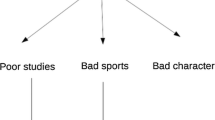Abstract
In contrast to previous formulation of rational-emotive theory, the present formulation is based on comprehensively critical rationalism (rather than logical empiricism), identifies negative evaluations (bad, wrong, awful) as the specific etiology of unwanted (dysphoric) emotions, and clarifies the definitional nature of such evaluations. In contrast, other cognitive-behavioral theories emphasize external events, faulty inferences, or the client's perception or construal of the situation as the source of the undesired emotional responses. It is difficult to choose among these theories because the purported etiological agents are confounded, and we do not have adequate measures of the degree to which people hold and understand various beliefs. Individuals can confirm the theory by noting their emotional reactions to those specific beliefs identified as irrational in this formulation. Dysphoric emotions (anger, anxiety, depression, guilt, jealousy, and shame) result, to a considerable extent, from fundamentalist, absolutistic, moral beliefs, and might be largely eliminated if children were no longer indoctrinated with these points of view.
Similar content being viewed by others
References
Albee, G. W. (1986). Toward a just society.American Psychologist, 41 891–898.
Bandura, A. (1977). Self-efficacy: Toward a unifying theory of behavioral change.Psychological Review, 84 191–215.
Bartley, W. W., III (1984).The retreat to commitment (2nd ed.). LaSalle: Open Court.
Beck, A. T. (1967).Depression: Clinical, experimental, and theoretical aspects. New York: Harper & Row.
Ellis, A. (1962).Reason and emotion in psychotherapy. New York: Lyle Stuart.
Ellis, A. (1980). Rational-emotive therapy and cognitive behavior therapy: Similarities and differences.Cognitive Therapy and Research, 4 325–340.
Ellis, A. (1984). The essence of RET — 1984.Journal of Rational Emotive Therapy, 2(1), 19–25.
Ellis, A. (1987). A sadly neglected cognitive element in depression.Cognitive Therapy and Research, 11 121–146.
Fösterling, F. (1986). Attributional conceptions in clinical psychology.American Psychologist, 41 275–285.
Haaga, D. A., & Davison, G. C. (1989). Outcome studies of rational-emotive therapy. In M. E. Bernard & R. DiGiuseppe (Eds.),Inside RET: A critical appraisal of the theory and therapy of Albert Ellis. New York: Academic Press.
Harré, R., & Lamb, R. (Eds.). (1983).The encyclopedic dictionary of psychology. Cambridge, MA: M.I.T. Press.
Malouff, J. M., & Schutte, N. S. (1986). Development and validation of a measure of irrational belief.Journal of Consulting and Clinical Psychology, 54 860–862.
Malouff, J. M., Valdenegro, J., & Schutte, N. S. (1987). Further validation of a measure of irrational belief.Journal of Rational-Emotive Therapy, 5 189–193.
Meehl, P. E. (1962). Schizotaxia, schizotypy, schizophrenia.American Psychologist, 17 827–838.
Meehl, P. E. (1964).Manual for use with checklist of schizotypic signs. Minneapolis: University of Minnesota Medical School, Psychiatric Research Unit.
Meichenbaum, D. (1977).Cognitive-behavior modification: An integrative approach. New York: Plenum.
Oatley, K., & Bolton, W. (1985). A social-cognitive theory of depression in reaction to life events.Psychological Review, 92 372–388.
Polkinghorne, D. (1983).Methodology for the human sciences: Systems of inquiry. Albany: State University of New York.
Ramanaiah, N. V., Heerboth, J. R., & Schill, T. R. (1987). Measurement of irrational beliefs: A critical review. In J. N. Butcher & C. D. Spielberger (Eds.),Advances in personality assessment (Vol. 6). Hillsdale, NJ: Erlbaum.
Rorer, L. G. (1989). Rational-emotive theory: I. An integrated psychological and philosophical basis.Cognitive Therapy and Research, 13 477–494.
Smith, T. W. (1982). Irrational beliefs in the cause and treatment of emotional distress: A critical review of the rational-emotive model.Clinical Psychology Review, 2 305–322.
Smith, T. W., & Allred, K. D. (1986). Rationality revisited: A reassessment of the empirical support for the rational-emotive model. In P. E. Kendall (Ed.),Advances in cognitive-behavioral research and therapy (Vol. 5, pp. 63–87). New York: Academic Press.
Stiles, W. B., Shapiro, D. A., & Elliott, R. (1986). “Are all psychotherapies equivalent?”American Psychologist, 41 165–180.
Thebarge, R. T. (1989). Development of a context-relevant test of irrational thinking (Doctoral dissertation, Miami University, 1989).
Walen, S. R., DiGiuseppe, R., & Wessler, R. L. (1980).A practitioner's guide to rational-emotive therapy. New York: Oxford University Press.
Wessler, R. A., & Wessler, R. L. (1980).The principles and practice of rational-emotive therapy. San Francisco: Jossey-Bass.
Author information
Authors and Affiliations
Additional information
This project was supported, in part, by Grant MH-39077 from the National Institute of Mental Health. William Chaplin, Raymond DiGiuseppe, Timothy G. Dowd, Albert Ellis, Lewis R. Goldberg, Laury Goolsby, Sarah E. Hampson, William H. Hendricks, Bobbie G. Hopes, Oliver P. John, Dean Peabody, Tina K. Rosolack, William B. Stiles, Ronald W. Thebarge, Denise M. Town, and an anonymous reviewer all made many helpful suggestions in response to earlier versions of this manuscript. I am indebted to them all.
Rights and permissions
About this article
Cite this article
Rorer, L.G. Rational-emotive theory: II. explication and evaluation. Cogn Ther Res 13, 531–548 (1989). https://doi.org/10.1007/BF01176066
Issue Date:
DOI: https://doi.org/10.1007/BF01176066



